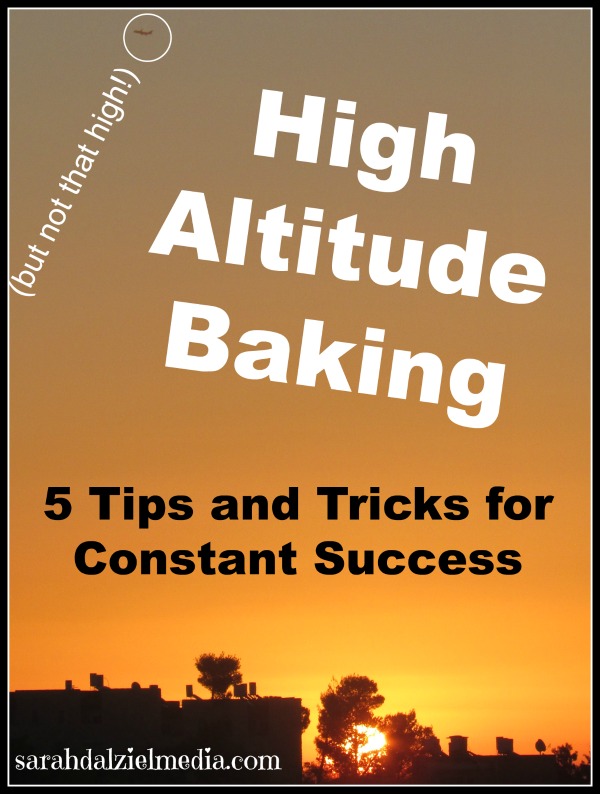Moving, traveling, or volunteering can change your location, and your altitude. However, just because the altitude is the same doesn’t mean your baking will be. Keep a few of these tips and tricks in mind when doing high altitude baking, and enjoy perfectly prepared baked goods every time!
While I grew up doing plenty of high altitude baking, thanks to BC’s mountains. The general atmosphere nearly always had a decent humidity level. With my recent move to Jerusalem, while the altitude is similar (or even slightly lower), the atmospheric humidity sure isn’t! This means that, while I love my baking, I can’t follow a recipe blindly or it will not turn out. 
Though, the last time I checked there was only one recipe that I ever follow exactly… these delicious brownies. Everything else is fair game to adjust, change, and create variations of. A case in point, I decided to make chocolate zucchini muffins, and ended up making five different changes to the recipe!
5 High Altitude Baking Tips
Tip One:
Expect a longer baking time, and a higher baking temperature. If you follow a recipe, particularly for something damp like a cake, expect it to take up to 10 minutes longer to cook. Alternatively you can raise the temperature by up to 25 degrees F. to keep it to closer to the original baking time. However, if you use honey in the recipe you may not want to raise the temperature, since honey browns faster than sugar.
Tip Two:
Cut back the liquid by up to half a cup. If you are making a recipe involving milk or water, you can cut back the liquid to make a drier dough. This will take the average time to cook, and if combined with raising the oven temperature will usually equal a perfect cake or muffin.
Tip Three:
If you are working with drier ingredients, or no additional liquid outside of the eggs and oil, and your dough seems too damp, add more flour. I usually add in up to half a cup of extra flour when making cookies, or brownies, to compensate for how the ingredients behave at higher elevations.
Tip Four:
Use denser oils. If your recipe calls for vegetable oil, use coconut oil or butter. The longer chain oils bind easier, and are less likely to over-extend (make your baking floppy), than the shorter chain oils. I prefer to always use butter, but have found that coconut oil will work as a decent liquid vegetable oil substitute in all baking (butter’s outrageously expensive here, and only in tiny packages so… coconut it is).
Tip Five:
Learn what your dough is supposed to look like. Some days, you can add 3 cups of flour and have it perfect, other days you add those same 3 cups and the dough is too wet so you need to add a 4th cup. If you do other substitutions, like adding banana to your muffin recipe… you may also need to compensate more than you normally would.
General Baking Advice:
Excepting tip five, you probably only need to apply two tips per recipe or baking experiment. Cutting liquid or increasing flour are exclusives, you do one or the other. You can, however, always adjust cooking time or temperature. Even while you are baking. If your first tray of cookies isn’t quite right, check the temperature or adjust cooking time. If your cake has challenges, make notes and adjust for the next time round.
When doing high altitude baking, it is usually the liquid/dry ratio, or the cooking temperature/time that is off. Be prepared to adjust and fiddle with these elements whenever you change your baking location. Remember, an atmospherically dry/wet day can also muddle these elements.
Back To You:
What is your favorite baking recipe? What is your biggest baking struggle?
Leave a comment, I love hearing from you!

[…] numbers together. While baby food is expensive, and premade food is just as expensive, the more I cook at home the easier it is to stay in that […]